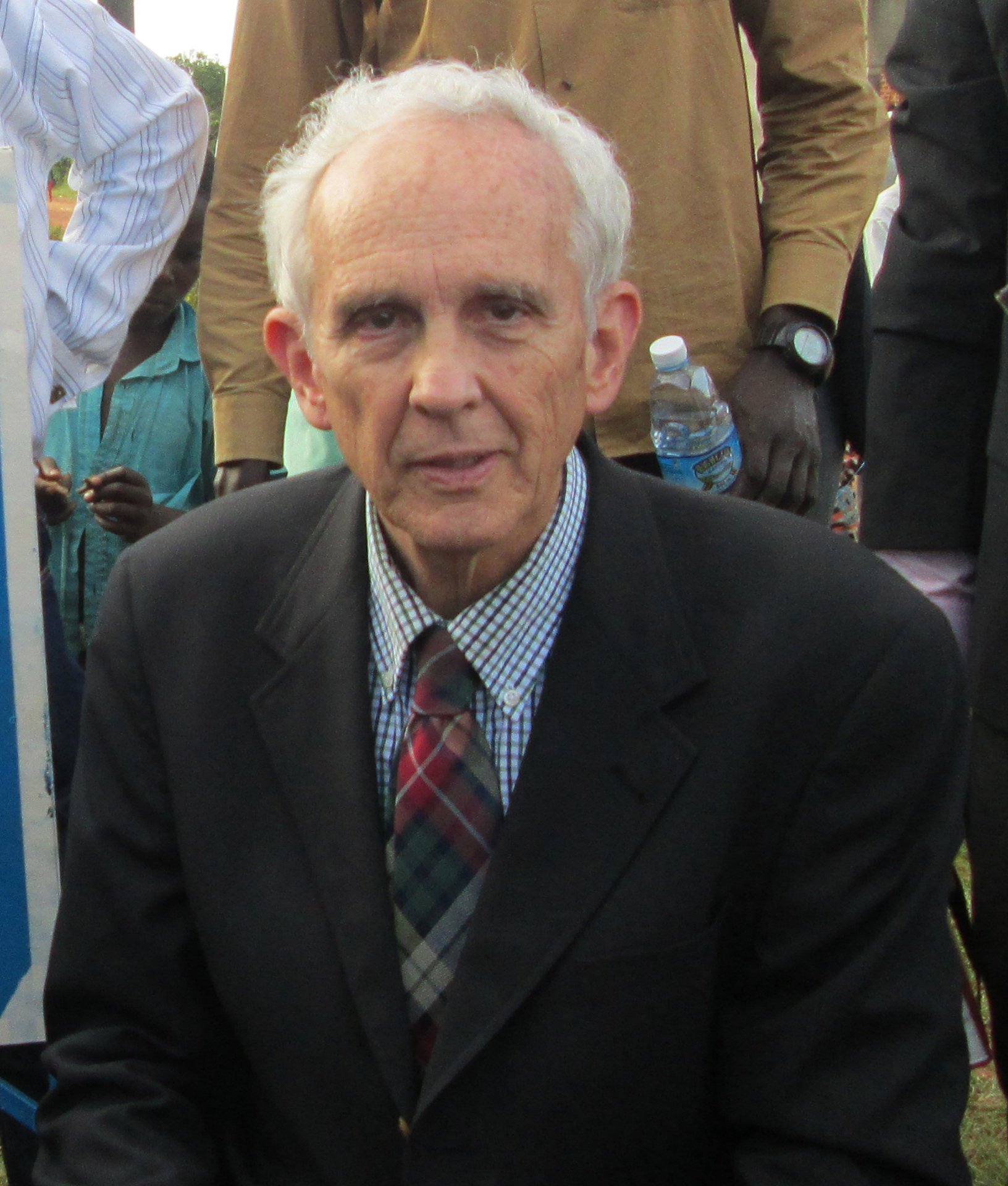by Dr. Gregory Bartha
July 26, 2017
Ever since our trip to western Uganda a year ago to visit Queen Elizabeth National Park and the Rwenzori Mountains, James, the clinical officer I work with the Cross Clinic, has talked about visiting Kidepo National Park in extreme northeastern Uganda. Kidepo is the third largest park in Uganda and was created in 1962. The animal viewing there is reported to be excellent.
The opportunity to make this trip came up when Lexi Haest volunteered at the Cross Clinic in April 2017, and expressed a desire to see the park. Consequently, four of us set off on April 26 – James, Lexi, Ibrahim the driver, and myself. The journey required 7 to 8 hours of travel almost all on dirt roads, some quite rough. As we drove farther north, we entered the land of the Karamoja, a colorful people related to the Masai in Kenya.
The word Karamoja means old and tired. The people were pastoral and migrated in a southerly direction. Those who were aged and infirm could not keep up and were left behind in the northern regions; they are now called the Karamoja people. We passed them dressed in their colorful robes and using walking sticks. Many sported hats and wore beads and large earrings.
As we drove farther north, we passed through several small mountain ranges, then entered a very dry and barren area. Finally, as we neared the park, the land was greener with more trees and ringed and by low-lying mountains. The park is extremely remote, just bordering South Sudan and is sparsely populated. The name of the park is derived from the word “kidep” meaning to pick. Palm trees bearing nuts grow in the area, and in times of famine, people would come to pick the nuts. “O” was just added to the word kidep.
When we arrived at the central park area, we were greeted by monkeys, jackals and warthogs. Waterbuck, a large antelope type, and buffalo grazed nearby. Each of us stayed in a bund, a small conical structure replete with bed, mosquito net and bathroom.
The next day, we went on two game drives; one in the morning and one in the late afternoon, ending at dusk. We were accompanied by a park ranger carrying a rifle. We drove across rolling hills along the Nauru River. Some areas were dry and featured only scattered trees. Others showed forth thickets of shrubs and trees. The park management burns some areas in the dry season, so new green growth will appear in the wet time and provide food for the animals.
Buffalo were present in great number in the park – over 13,000. The herds would give one an idea of what the herds would have been like in the US before the widespread killing occurred. We saw several groups of zebras and encountered three lions resting along the riverbank. There were two groups of elephants, one with three juveniles, and two groups of giraffe grazing on acacia trees. We saw numerous antelope – mainly the tiny oribi, the hartebeests and the majestic waterbuck, with their white manes and beautiful faces. There were a large number of baboons eating the fruit of the sausage tree, which is prevalent in the park. In addition, we were able to get a good view of many birds, including a pair of Abyssinian ground hornbills and the Abyssinian roller. The most impressive sight was the large number of buffalo dotting the landscape.
The following comments may be of interest:
Few lions remain in Uganda – less than 300. They tend to wander into agricultural land areas and are killed. Also, there aren’t enough antelopes for them; they have to rely on buffalo, which are harder to bring down and which can inflict injury to the lions. The roar of a lion can be heard 8 km away.
Leopards are solitary creatures, active mainly at night. Males and females are together only at the time of mating, and the young are sent out on their own after one year.
Giraffe can reach 6 meters in height. They feed on acacia and sausage trees; the latter so-called because their fruit hangs down and resembles large sausages. Giraffe have a strong kick, which can severely injure or kill a lion, so lions avoid them.
Elephants can weigh up to six tons and live 60 to 70 years in family groups. Their tusks are really long incisor teeth, used for digging up salt, stripping bark off trees to get nutrients, and for fighting. The trunk is an elongated upper lip and can spray up to 60 liters of water. Their ears which flap are cooling mechanism. Blood flowing through them cools about 9°C.
Buffalo can live up to 23 years. When one is injured and cannot keep up the pace, it separates from the herd and seeks out other similarly isolated animals.
The ostrich has strong talons and a strong kick which can kill a lion.
The waterbuck have a ring of white on their rump. The story is told that this was a result of the animal not heeding a wet paint sign on the toilet in Noah’s ark. In fact, however, this marketing is to help the young follow the adults when they are fleeing predators. Also, they have sweat glands which emit a strong odor that tends to repel predators.
The eland is the largest member of the antelope family, weighing up 1000 kilograms, but they are very shy.
The hartebeest sport large curving horns and act as sentinels for other animals, warning them of predators in the area. They are fast, but easily distracted and may stop fleeing a lion and start to graze – a fatal error.
The zebra are grazers. They too have a strong kick to defend themselves and can knock out a lion’s teeth. Alternating stripes may serve as camouflage or act as a cooling mechanism. Air flows faster over dark surfaces and slower over white areas, setting up air currents.
The cheetah can run up to 100 kilometers per hour but only for short distances. They trap their prey, then crush its neck with their teeth.
Many species of birds are found in Uganda, perhaps more than any other country.
Plans are underway to introduce rhino into the park.






Recent Comments